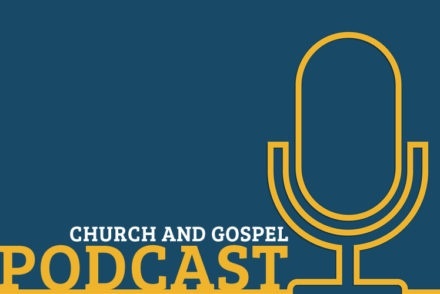Commenting on a recent Barna Research Group study of Bible literacy in America, Fox News Opinion analyst Jeremiah Johnston wrote, “The evidence is overpowering that contemporary Christianity is Bible-ish, at best, and at worst, in some cases, Bible-less”(see www.foxnews.com, February 10, 2016). Johnston’s conclusions are consistent with those of other observers. While most Americans own three Bibles, only a small percentage actually read them, and as a result, Bible knowledge is greatly diminished. We don’t know the Bible because we no longer read or study it.
Certainly every believer should hunger and thirst for righteousness and the eternal guidance of God’s Word. Just the same, our corporate Bible illiteracy may derive from more than hectic personal schedules, distractions and preoccupations, and colliding priorities. The belief that Sodom and Gomorrah were married forty days and forty nights may also signal a subtle paradigm shift in the ministry and role of the local church. Bible teaching may have slipped to the edges of church mission, shoved aside by activities and functions with greater cultural resonance. Today many congregations are organized around small group fellowship, sports, gender specific groupings, age-graded activities, and mission assignments with little regard for actual Bible instruction.
The centrality of Bible teaching to church mission is a common New Testament theme. Jesus was known primarily as Rabbi, or teacher. His ministry of teaching was annotated in the Gospels in the many occasions he was with groups, teaching them. His final instructions to the Twelve, the Great Commission, involved the command to “…make disciples of all nations…teaching them to observe all that I have commanded you” (Matthew 28:20, ESV). We cannot underestimate his expectation that teaching would constitute an essential element of the mission entrusted to us.
Luke’s second writing, The Acts of the Apostles, vividly demonstrated how teaching moved the early church from Jerusalem, to Judea, and Samaria, and the utter most parts of the earth (see Acts 1:8). The opening verse of Acts referenced our Lord’s teaching ministry. Luke wrote–
In the first book, O Theophilus, I have dealt with all that Jesus began to do and teach. (Acts 1:1, ESV)
Throughout Acts teaching was a focal point. The Apostles, Paul, and the other missionaries devoted large segments of their mission to times of teaching. Even in the very last verses of Acts, teaching was mentioned. Again, Luke recorded the history–
He lived there two whole years at his own expense, and welcomed all who came to him, proclaiming the kingdom of God and teaching about the Lord Jesus Christ with all boldness and without hindrance. (Acts 28:30-31, ESV)
In the same way, the Epistles established a standard for instruction. One verse from the Apostle Paul’s second letter to Timothy may serve as a summary example of the many references–
All Scripture is breathed out by God and profitable for teaching, for reproof, for correction, and for training in righteousness, that the man of God may be complete, equipped for every good work. (2 Timothy 3:16-17, ESV)
Recovering the centrality of Bible teaching in the local church may be the most serious spiritual challenge a “Bible-ish” nation is facing. In four pastorates over thirty-five years this challenge was met through five significant commitments–
(1) Emphasize Bible teaching as an essential element of mission.
For many reasons Sunday School remained the central Bible teaching function of the four churches I pastored. These units were re-named Life Connection Groups in my final twelve years of pastoral leadership. We didn’t apologize for having a specified time of Bible teaching and we fully expected the church family to be in a Bible teaching unit. Teaching units were also offered beyond the traditional Sunday morning schedule. Many churches provide sound and effective Bible teaching without the structure and timing of a Sunday School. But, teaching should be publicized in every possible way.
(2) Identify and train those with a passion to teach.
Some believers are gifted to teach, others have strengths that inform and enable teaching, and still others are passionate about teaching. These individuals should be identified and trained at every opportunity.
(3) Choose a teaching curriculum that is Bible specific.
Our denomination publishes many Bible teaching possibilities. Some are Bible book focused, others are thematic, and others are written around affinities like marriage and family, parenting, single adults, and more. The common threads in choosing a teaching system are sound doctrine, clear Bible interpretation, and discipleship orientation.
(4) Multiply Bible teaching units.
Many Bible teaching organizations are stale and static. The instructional ministry of the church should be dynamic and organized around the personal growth of participants. New units keep the Bible teaching function of the church fresh and viable.
(5) Regularly evaluate the teaching ministry.
The effectiveness of the Bible teaching functions of the church must be assessed on a regular basis to sufficiently respond to the needs of the learners in the church. Making disciples involves teaching them. Leaders must review this ministry at regular intervals.
The Apostle Paul strategically identified the teaching of God’s Word in the disciple making assignment given to the church. He wrote–
Do all things without grumbling or disputing, that you may be blameless and innocent, children of God without blemish in the midst of a crooked and twisted generation, among whom you shine as lights in the world, holding fast to the word of life. (Philippians 2:14-16a, ESV)
We’re to teach it so God’s people will know it and live it.





No Comments